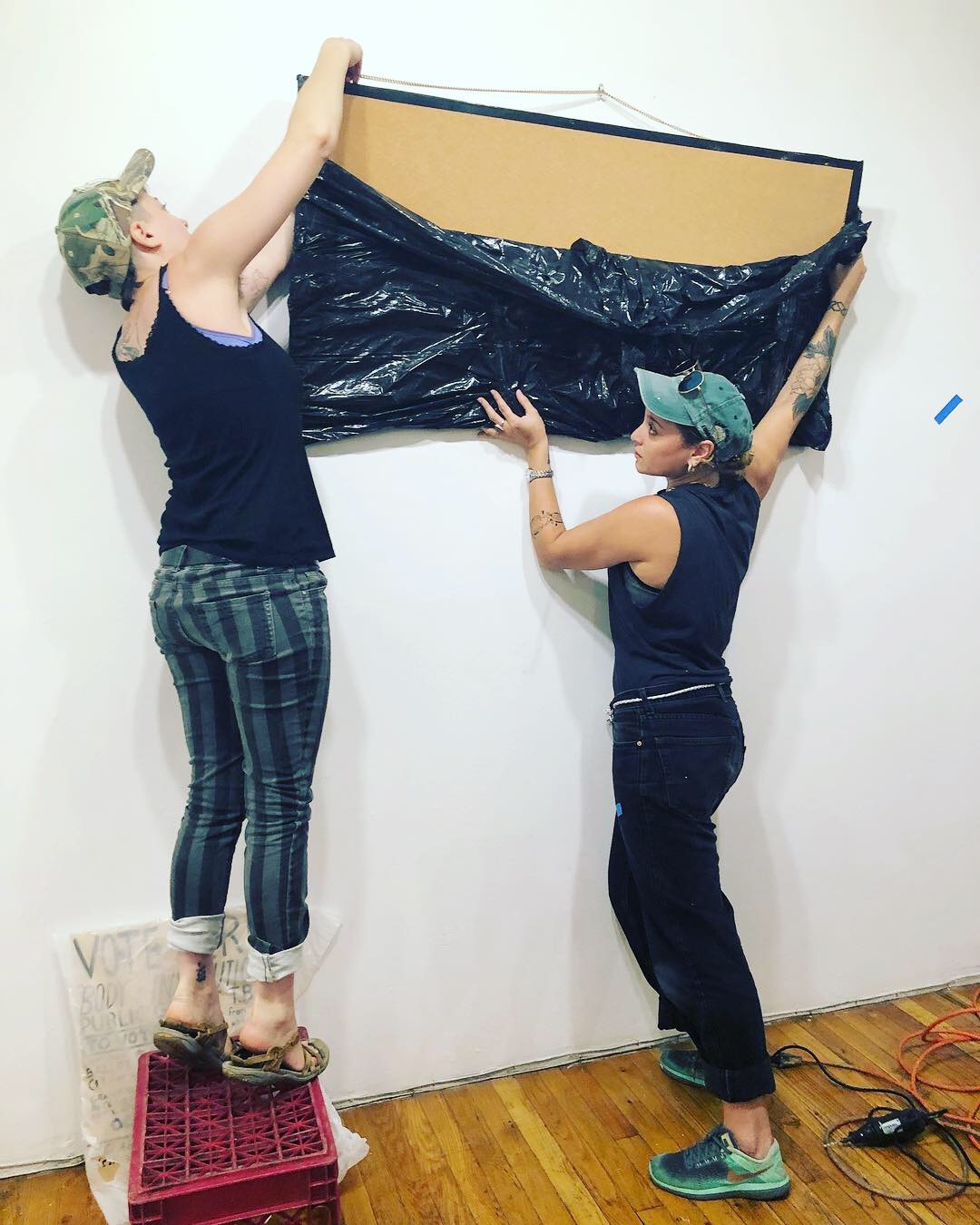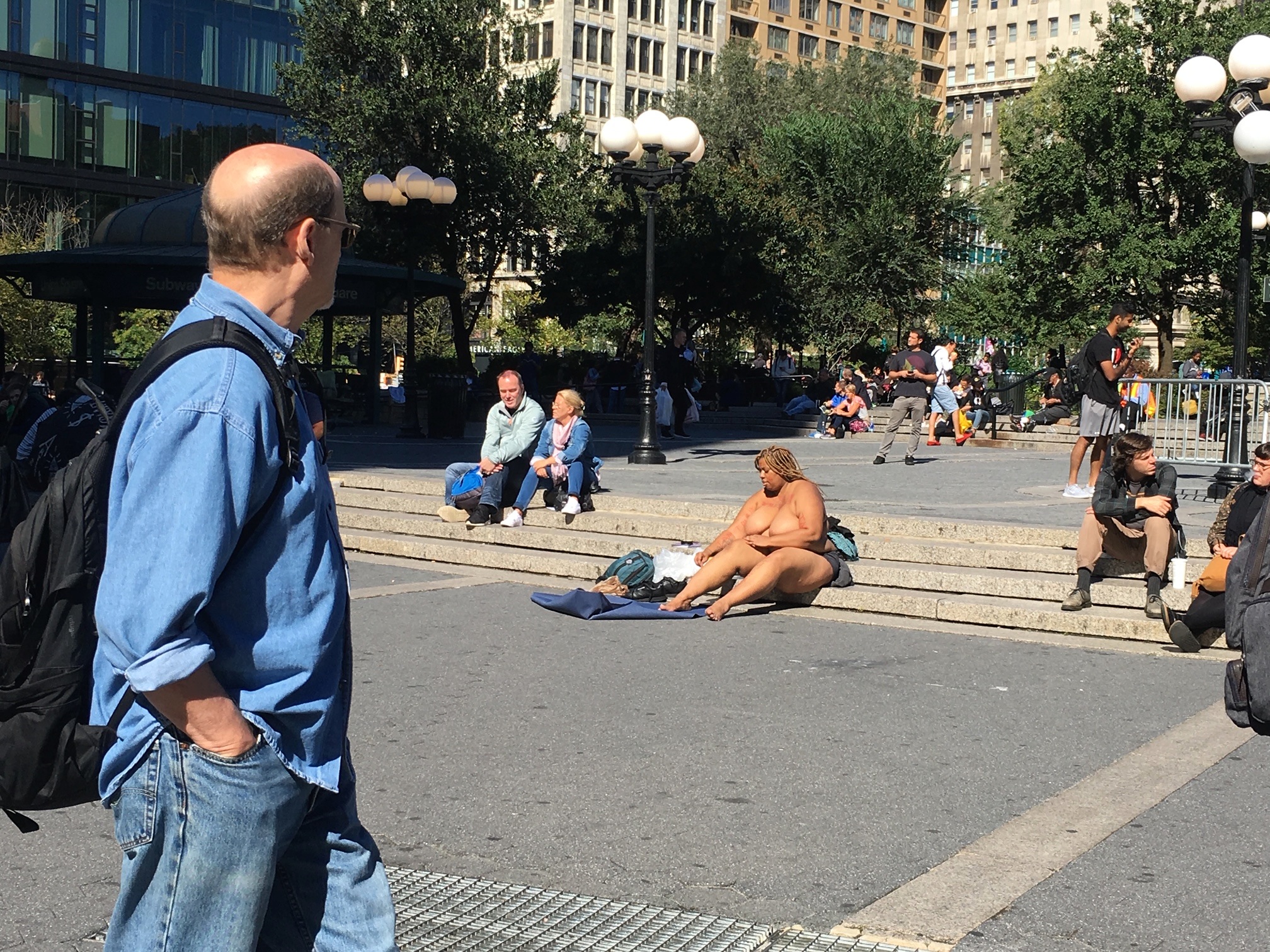
Install, AiOP BODY: Unseen/Reclaimed, (pic Esther Neff and Katie Hector), Westbeth Gallery, photo Katie Hector
As I reflect upon 2018, I recognize it was a year punctuated with weekly meetings hosted in Brooklyn apartments, characterized by flurries of texts, emails, instagram DMs, WhatsApp messages, and epitomized by driving a minivan packed so full of artwork that the rear view mirror was often rendered completely useless. These memories and the time and effort that went into creating them were directed towards constructing a platform. During the month of October that platform actualized both on the streets of New York City and at Westbeth Gallery in the presentation of work by forty-three artists and collectives from all over the world for Art in Odd Places 2018: BODY.
Since its genesis AiOP’s annual performance festival has tactfully utilized the visibility of public space as a forum for artistic agency and the unhindered exchange of ideas. For many artists the hustle and bustle of a New York City sidewalk represents a stark contrast to the institutional white-walled architecture of a gallery space. Yet, there is an intangible raw magic present when performing in public space, an energetic mixture of vulnerability and unpredictability galvanized by the palpable stares of a transient audience. I am intimately aware of how electrifying this interaction can be having performed in 2017’s festival, I subsequently felt inspired to share this formative opportunity with more artists. I jumped at the chance to help organize the AiOP’s 2018 festival and carry on its grassroots, artist-run spirit.
Guided by Katya Grokhovsky’s curatorial vision the AiOP 2018 team created a sizable platform by expanding upon the customary four-day performance festival to include a month-long exhibition at Westbeth Gallery as well as a discussion panel and public receptions. Through my role as an organizer I helped facilitate a broad range of creative practices and collaboratively worked with individual artists to ensure their projects were realized. After the gallery closing reception, after the exhibition was de-installed, and the holes patched, work shipped back to the artists, I took stock of my role as an organizer and began to acquire a deep appreciation for the collective energy shared during the month of October.
I believe AiOP and artist-run organizations serve as examples for how to build and fortify creative communities. No movement in the history of art was conceived and executed by a single artist. Movements originate from creative communities which support, discuss, and encourage each other. My hope is that as the artists from AiOP 2018 move forward they carry with them the connections they made and recognize the influential force artists possess when collectively working together.
Katie Hector
AiOP BODY 2018 Curatorial Assistant

